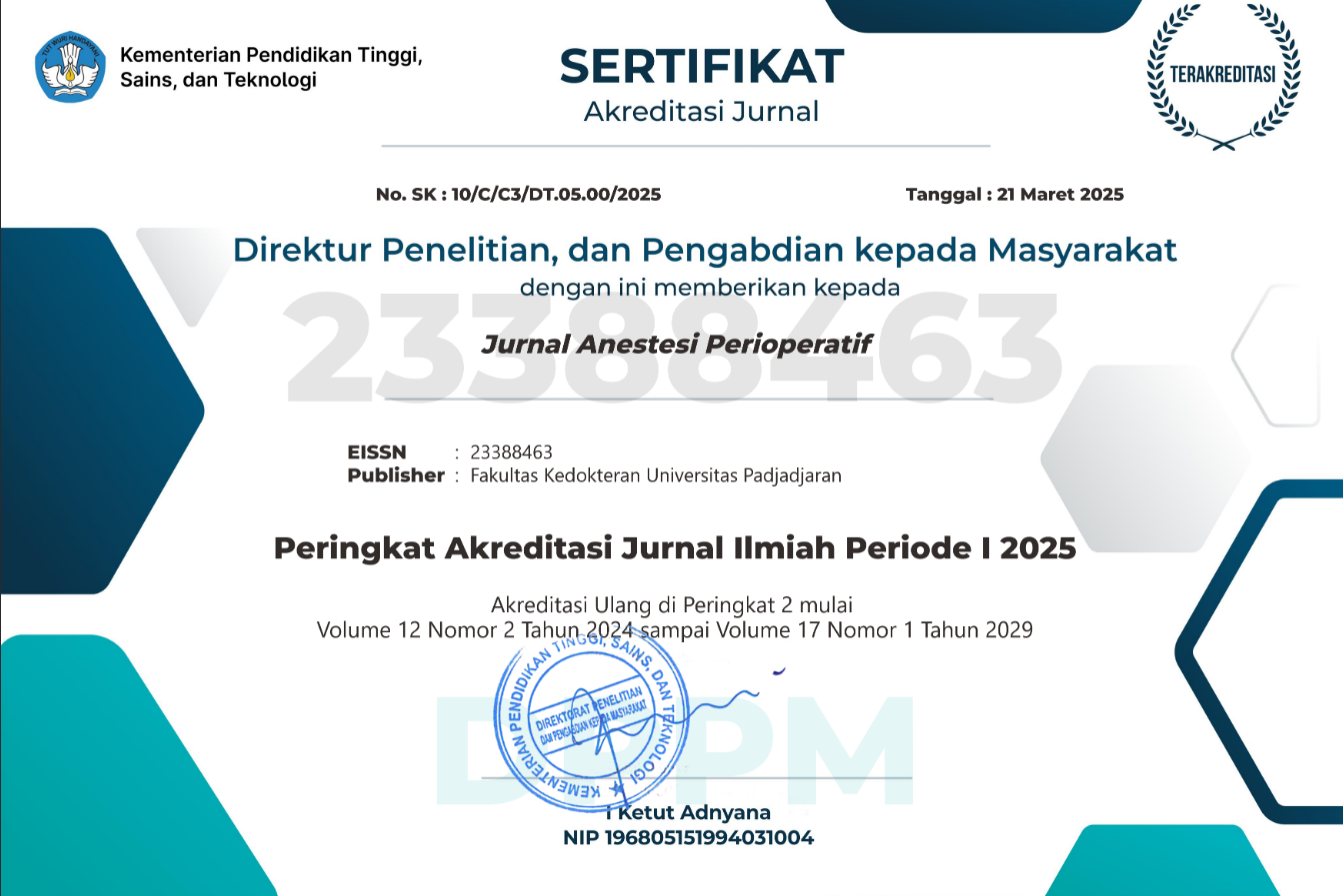Severe Hypokalemia in the Intensive Care Unit: Case Series on Potassium Correction Strategies and Clinical Outcomes
Abstract
Hypokalemia is one of the electrolyte disorders that often occurs in intensive care units (ICUs), defined as a serum potassium concentration below 3.5 mmol/L. Its severity is classified as mild (3.0–3.4 mmol/L), moderate (2.5–3.0 mmol/L), and severe (<2.5 mmol/L). Hypokalemia occurs when the body loses too much potassium due to several factors such as vomiting, excessive diarrhea, kidney disease, hormonal disorders, or taking diuretic drugs. Symptoms of hypokalemia generally appear when serum potassium is less than 3.0 mmol/L, ranging from mild weakness to life-threatening cardiac arrhythmias. In critically ill patients, untreated severe hypokalemia can lead to cardiac arrhythmias, respiratory arrest, and renal dysfunction, with a higher risk of complications and mortality in patients with hypotension, diabetes, or chronic kidney disease. This case series involved six ICU patients with severe hypokalemia (K⁺ ≤1.8 mmol/L) who underwent rapid potassium correction at a rate of 10–40 mEq/hour adjusted to the patient's clinical severity. In patients with ventricular arrhythmias, initial correction of 2 mEq/minute was followed by 10 mEq over 5–10 minutes. Most patients showed clinical improvement, while worse outcomes were observed in patients with hyperthyroidism and after return of spontaneous circulation (ROSC). This case series highlights the importance of individualized potassium replacement strategies, immediate intervention, and careful monitoring to prevent life-threatening complications and improve outcomes in patients with severe hypokalemia in the ICU.
Keywords
Full Text:
PDFReferences
- Castro D, Sharma S. Hypokalemia. In: StatPearls [Internet]. Treasure Island (FL): StatPearls Publishing; 2023 [cited 2023 Oct 24]. Available from: http://www.ncbi.nlm.nih.gov/books/NBK482465/.
- Kardalas E, Paschou SA, Anagnostis P, Muscogiuri G, Siasos G, Vryonidou A. Hypokalemia: a clinical update. Endocr Connect. 2018;7(4):R135–46. doi: 10.1530/EC-18-0109
- Krogager ML, Kragholm K, Thomassen JQ, Søgaard P, Lewis BS, Wassmann S, et al. Update on management of hypokalaemia and goals for the lower potassium level in patients with cardiovascular disease: a review in collaboration with the European Society of Cardiology Working Group on Cardiovascular Pharmacotherapy. Eur Heart J Cardiovasc Pharmacother. 2021;7(6):557–67. doi: 10.1093/ehjcvp/pvab038
- Phuyal P, Bhutta BS, Nagalli S. Hypokalemic periodic paralysis. In: StatPearls [Internet]. Treasure Island (FL): StatPearls Publishing; 2025 [cited 2025 Mar 18]. Available from: http://www.ncbi.nlm.nih.gov/books/NBK559178/.
- Hootkins R, Emmett M. Evaluation of the safety and efficacy of the central venous administration of potassium chloride including the measurement of intracardiac potassium concentrations. Proc (Bayl Univ Med Cent). 2019;33(1):24–7. doi:10.1080/08998280.2019.1678339
- Du Y, Mou Y, Liu J. Efficiency evaluation and safety monitoring of tailored rapid potassium supplementation strategy for fatal severe hypokalemia. Exp Ther Med. 2019;17(4):3222–32. doi:10.3892/etm.2019.7292
- Asmar A, Mohandas R, Wingo CS. A physiologic-based approach to the treatment of a patient with hypokalemia. Am J Kidney Dis. 2012;60(3):492–7. doi:10.1053/j.ajkd. 2012.01.031
- McMahon RS, Bashir K. Potassium Chloride. In: StatPearls [Internet]. Treasure Island (StatPearls Publishing; 2025 [cited 2025 Mar 24]. Available from: http://www.ncbi.nlm.nih.gov/books/NBK557785/.
- Alfonzo AV, Isles C, Geddes C, Deighan C. Potassium disorders-clinical spectrum and emergency management. Resuscitation. 2006;70(1):10–25. doi:10.1016/j.resuscitation.2005.11.002
- Garg AK, Parajuli P, Mamillapalli CK. Pregnancy complicated by hypertension and hypokalemia. Am J Kidney Dis. 2020;76(4):A21–A22. doi:10.1053/j.ajkd.2020.04.012
- Sarfo-Adu BN, Jayatilake D, Oyibo SO. A case of recurrent gestational hypokalemia due to an exaggerated physiological response to pregnancy: the importance of using pregnancy-specific reference ranges. Cureus. 2023;15(12):e51213. doi:10.7759/cureus.51213
- Neki NS. Hyperthyroid hypokalemic periodic paralysis. Pak J Med Sci. 2016;32(4):1051–2. doi:10.12669/pjms.324.11006
DOI: https://doi.org/10.15851/jap.v13n2.4451
Article Metrics
Abstract view : 150 timesPDF - 59 times
This Journal indexed by

JAP is licensed under a Creative Commons Attribution-NonCommercial 4.0 International License
View My Stats



